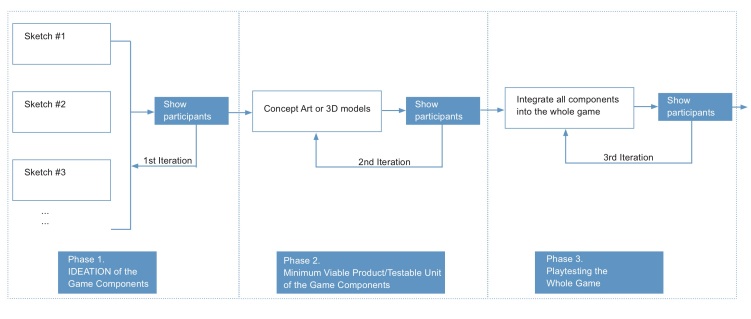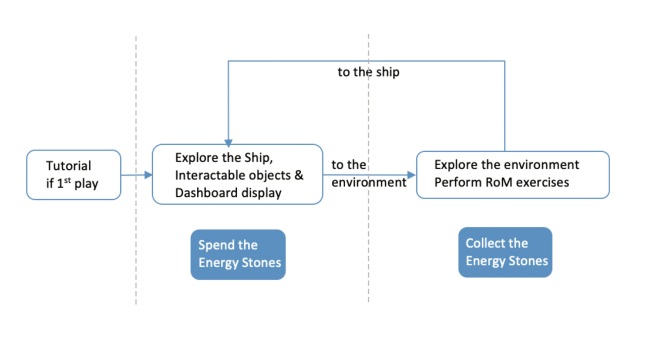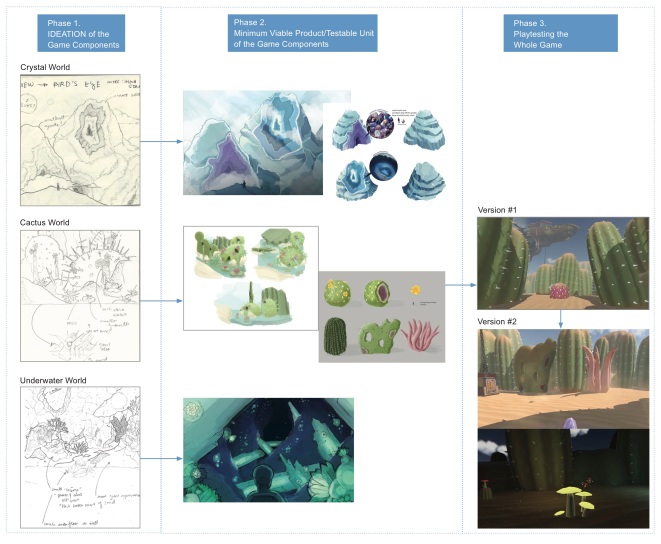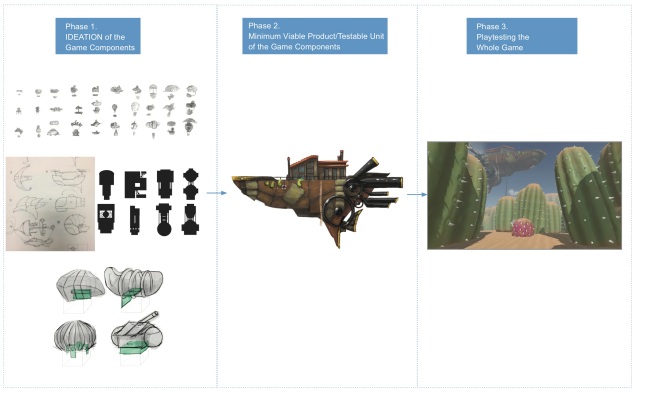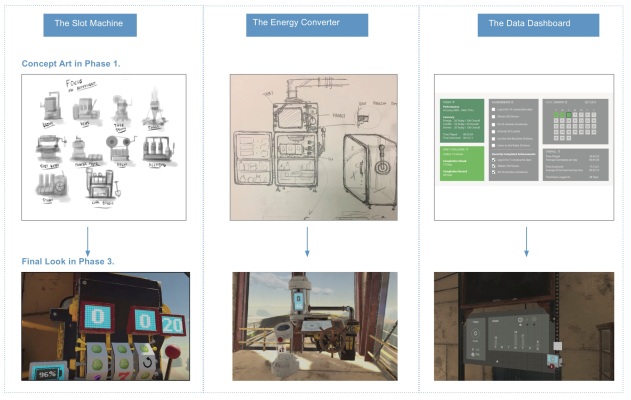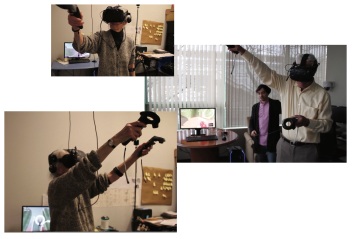Game Trailer
Play-through Video
[Team Project] This project described a participatory iterative design process of a virtual reality (VR) game named LumaPath, which was designed to promote physical activities for aging arthritis patients.
Although conducting playtesting is common, the design is normally done by designers or developers before shown to or tested by players. Further, while needs analyses are common, participatory design through many phases in the early stage of game development is not. Therefore, in LumaPath, we adopted the participatory design method and took an iterative approach since the very early stage of designing LumaPath.
[My Role] Project Manager, Game Designer, Developer, Researcher
Problem
Rheumatoid arthritis (RA) is a chronic, inflammatory, and systemic disease often associated with impairments, activity limitations, and social participation restrictions. Keeping physically active can become more challenging as a person ages, but it is critical for maintaining physical function and a positive Quality of Life. Although numerous video games or interactive systems have been developed to help motivate players’ physical activity, very few have targeted aging populations or more specifically, aging arthritis patients, and very few used a participatory design approach. We argue that serious VR game design complicates the notion of involving users as co-designers, in part because serious VR game designers must be fluent with both domain content and game design. In addition, working with users who may be considered to be “at-risk” and the added structures in healthcare contexts pose challenges that can be formidable.
DESIGN ITERATION
During the process, our targeted players, aging arthritis patients, were involved extensively in three phases as our co-designers. We also provide examples of how the iterations of virtual environments, objects, and interactions responded to the feedback collected from the in-depth, sustained participatory design, where patients became more akin to partners in designing games. Over many iterations, our design decisions were made according to what proved best for aging arthritis patients in the pilot tests. Finally, we share the insights gathered from our participants about how to better VR work with the aging patients in the participatory design processes.
1. Game Design Iterations
2. Game Flow Chart
3. Virtual Worlds Ideation
4. Spaceship Ideation and Design
5. Other In-game Components Design
6. Physical Activity Interaction Brainstorming Ideas.
7. Virtual Pet Visual Look Design Iteration.
USer study
Twenty-eight people participated in this study (Female = 15, Male = 13, M = 37.63, SD = 18.89), and their age ranging from 20 to 79. Eight of the twenty-eight were senior adults (>50 years old), and five were arthritis participants out of these senior adults with limitations in physical movement (3 females, mean = 61.5, SD = 11.01).
Here are the two main physical activity tasks we choose to test: (left) following the tracks and drawing circles or irregular shapes (i.e. taichi gesture); (right) connecting different pairs of dots into lines (i.e. stretching gesture).

This was a mixed-method study design. The participants were given 20 min to free-explore in this game after a 10-min tutorial, during which period their real-time Heart Rate Variation (HRV) data were collected. After the test, the participants were asked to fill in the Rating of Perceived Exertion (RPE) Scale. At the end of the study, the participants had a short semi-structured interview about their thoughts, experience and feelings.
Findings
Ten of the twenty-four participants had an average HR above their 50% threshold of max HR. This means that on average they were in a light aerobic state while playing Lumapath. Six participants had their HR go above their 60% threshold at least once during the game. One participant had their HR go above their 70% threshold once during gameplay. It’s also important to note that all senior participants above 40 years of age had their average HR above or very close to their 50% threshold
Conclusion
participants not only enjoyed the VR experience and being immersed in Lumapath’s game world, no matter of their age, but most of them were also in an aerobic state according to their HRV data. This supports the idea that designing a VR system that motivates physical movement and increases players QoL is possible, particularly when care is taken to address all possible needs of the target player group.
We iterated the virtual worlds with a virtual mascot and more environments according to the patients’ feedback. Currently, we are conducting a second user study to test the sense of social immersion with different socialization approaches in VR. We are working on the manuscript of the second user evaluation and this work will be submitted to CHI 2021.
Publication
Tong, X., Gromala, D., & Machuca, F. (2019, July). LumaPath: An Immersive Virtual Reality Game for Encouraging Physical Activity for Senior Arthritis Patients. In International Conference on Human-Computer Interaction (pp. 384-397). Springer, Cham.
Back to Projects.

